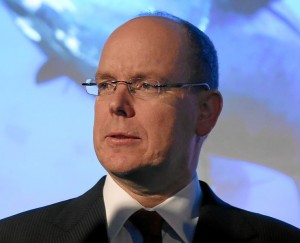Monaco
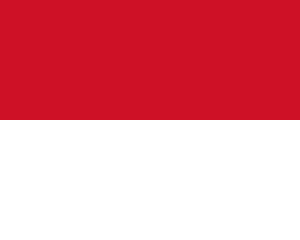
Monaco
Boasting the highest per-capita income, Monaco is the world’s richest and most-densely populated country, second-smallest, after the Vatican, just under one square mile, half the size of New York’s Central Park. There are only 30,000 residents and they don’t pay any income taxes, which is why most of them live here. It is a sovereign country with full membership in the United Nations. The head of government is appointed by the monarch from a list of candidates provided by France. So ultimately, France has significant control over the government, but the monarchy runs the economy. Monaco has done a magnificent job with all its money, building wonderful structures and creating an extremely well-planned community. If coming by train, you will arrive in one of the cleanest train stations in Europe, carved into the rocks deep underground with a small mountain overhead. Choose your way out of the station carefully, depending on where you want to go first, for there are three exits that lead to each of the town’s three main destinations: train-level exit marked “Condamine” for the harbor, “Fontvieille” leading to the palace, or the upper exit for the casino. Dennis Callan is president of the Hawaii Geographic Society and frequently leads tours through Europe, Canada and the USA. He produces the “World Traveler” television series, shown at 7:00 p.m. Tuesdays on ‘Olelo, channel 53. He writes a Star-Bulletin article the first Sunday of each month explaining how to get the most out of the world’s great places.
Monaco ![]() i/ˈmɒnəkoʊ/, officially the Principality of Monaco (French: Principauté de Monaco (French pronunciation: [prɛ̃sipoted(ə) mɔnaˈko]); Monégasque: Principatu de Múnegu; Italian: Principato di Monaco; Occitan: Principat de Mónegue), is a sovereign city-state, located on the French Riviera in Western Europe. It is bordered by France on three sides; one side borders the Mediterranean Sea. It has an area of 2.02 km2 (0.78 sq mi), and a population of 36,371, making Monaco the second smallest, and the most densely populated, country in the world. Monaco has a land border of only 4.4 km (2.7 mi), a coastline of 4.1 km (2.5 mi), and a width that varies between 1,700 and 349 m (5,600 and 1,145 ft). The highest point in the country is a narrow pathway named Chemin des Révoires on the slopes of Mont Agel, in the Les Révoires district, which is 161 metres (528 feet) above sea level. Monaco’s most populous Quartier is Monte Carlo, and the most populous Ward is Larvotto/Bas Moulins. Monaco is known for its land reclamation, which has increased its size byan estimated 20%.
i/ˈmɒnəkoʊ/, officially the Principality of Monaco (French: Principauté de Monaco (French pronunciation: [prɛ̃sipoted(ə) mɔnaˈko]); Monégasque: Principatu de Múnegu; Italian: Principato di Monaco; Occitan: Principat de Mónegue), is a sovereign city-state, located on the French Riviera in Western Europe. It is bordered by France on three sides; one side borders the Mediterranean Sea. It has an area of 2.02 km2 (0.78 sq mi), and a population of 36,371, making Monaco the second smallest, and the most densely populated, country in the world. Monaco has a land border of only 4.4 km (2.7 mi), a coastline of 4.1 km (2.5 mi), and a width that varies between 1,700 and 349 m (5,600 and 1,145 ft). The highest point in the country is a narrow pathway named Chemin des Révoires on the slopes of Mont Agel, in the Les Révoires district, which is 161 metres (528 feet) above sea level. Monaco’s most populous Quartier is Monte Carlo, and the most populous Ward is Larvotto/Bas Moulins. Monaco is known for its land reclamation, which has increased its size byan estimated 20%.
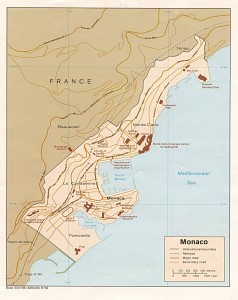 Monaco is a principality governed under a form of constitutional monarchy, with Prince Albert II as head of state. Even though Prince Albert II is a constitutional monarch, he still has immense political power. The House of Grimaldi have ruled Monaco, with brief interruptions, since 1297. The official language is French, but Monégasque, Italian, and English are widely spoken and understood. The state’s sovereignty was officially recognized by the Franco-Monegasque Treaty of 1861, with Monaco becoming a full United Nations voting member in 1993. Despite Monaco’s independence and separate foreign policy, its defence is the responsibility of France. However, Monaco does maintain two small military units.
Monaco is a principality governed under a form of constitutional monarchy, with Prince Albert II as head of state. Even though Prince Albert II is a constitutional monarch, he still has immense political power. The House of Grimaldi have ruled Monaco, with brief interruptions, since 1297. The official language is French, but Monégasque, Italian, and English are widely spoken and understood. The state’s sovereignty was officially recognized by the Franco-Monegasque Treaty of 1861, with Monaco becoming a full United Nations voting member in 1993. Despite Monaco’s independence and separate foreign policy, its defence is the responsibility of France. However, Monaco does maintain two small military units.
Economic development was spurred in the late 19th century with the opening of its first casino, Monte Carlo, and a railway connection to Paris. Since then, the principality’s mild climate, splendid scenery, and gambling facilities have made Monaco world-famous as a tourist destination and recreation centre for the rich and famous. However, in more recent years Monaco has become a major banking centerand has successfully sought to diversify its economy into the services and small, high-value-added, non-polluting industries. The state has no income tax, low business taxes, and is well known for being a tax haven.
The Place d’Armes in La Condamine
Statue of François Grimaldi, “il Malizia” (“the Cunning”), disguised as a monk with a dagger hidden under the cloak of his habit
Monaco’s name comes from the 6th century BC nearby Phocaean Greek colony. Referred to by the Ligurians asMonoikos, from the Greek “μόνοικος”, “single house”, from “μόνος” (monos) “alone, single” + “οἶκος” (oikos) “house” which bears the sense of a people either settled in a “single habitation” or of “living apart” from others. According to an ancient myth, Hercules passed through the Monaco area and turned away the previous gods. As a result, a temple was constructed there, the temple of Hercules Monoikos. Because the only temple of this area was the “House” of Hercules, the city was called Monoikos.
Following a land grant from Emperor Henry VIin 1191, Monaco was refounded in 1215 as a colony of Genoa. Monaco was first ruled by a member of the House of Grimaldi in 1297, when Francesco Grimaldi, known as “Il Malizia” (translated from Italian either as “The Malicious One” or “The Cunning One”), and his men captured the fortress protecting the Rock of Monaco while dressed as a Franciscan monk – a Monaco in Italian, although this is a coincidence as the area was already known by this name. Francesco, however, was evicted only a few years afterwards by the Genovese forces, and the struggle over “the Rock” continued for another century.
In 1419, the Grimaldis purchased Monaco from the crown of Aragon and became the official and undisputed rulers of “the Rock of Monaco”, and in 1612 Honore II began to style himself “Prince” of Monaco. In the 1630s, Honore II sought French protection against the Spanish forces and was eventually, in 1642, received at the court of Louis XIII as “Duc et Pair Etranger.” The princes of Monaco thus became vassals of the French kings while at the same time remaining sovereign princes. As successive princes and their families spent most of their lives in Paris, and through marriages with French and Italian nobilities, the House of Grimaldi, though is Italian. The principality continued its existence as a protectorate of France until the French Revolution.
In 1793, Revolutionary forces captured Monaco and it remained under direct French control until 1814, when the Grimaldis returned to the throne. The principality was reestablished that year, only to be designated a protectorate of the Kingdom of Sardinia by the Congress of Vienna in 1815. Monaco remained in this position until 1860 when, by the Treaty of Turin, the Sardinian forces pulled out of the principality and the surrounding county of Nice (as well as Savoy) was ceded to France. Monaco became a French protectorate once again. Prior to this time there was unrest in Menton and Roquebrune where the townspeople had become weary of heavy taxation by the Grimaldis. They declared their independence, hoping for annexation by Sardinia; France protested. The unrest continued until Charles III gave up his claim to the two mainland towns (some 95% of the principality at the time) which had been ruled by the Grimaldis for over 500 years. These were ceded to France in return for 4,100,000 francs. The transfer and Monaco’s sovereignty was recognized by the Franco-Monegasque Treaty of 1861. In 1869, the principality stopped collecting income tax from its residents—an indulgence the Grimaldis could afford to entertain thanks solely to the extraordinary success of the casino. This made Monaco not only a playground for the rich, but a favored place for them to live.
20th Century
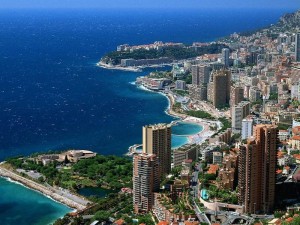 Until the Monegasque Revolution of 1910 forced the adoption of the 1911 constitution, the princes of Monaco were absolute rulers. The new constitution, however, barely reduced the autocratic rule of the Grimaldis and in any case Albert I soon suspended it.
Until the Monegasque Revolution of 1910 forced the adoption of the 1911 constitution, the princes of Monaco were absolute rulers. The new constitution, however, barely reduced the autocratic rule of the Grimaldis and in any case Albert I soon suspended it.
In July 1918, the Franco-Monegasque Treaty was signed, providing for limited French protection over Monaco. The treaty, endorsed in 1919 by the Treaty of Versailles, established that Monegasque international policy would be aligned with French political, military, and economic interests, and resolved the Monaco Succession Crisis.
In 1943, the Italian army invaded and occupied Monaco, setting up a Fascist administration. Shortly thereafter, following the collapse of Mussolini, the German Wehrmacht occupied Monaco and the Nazi deportation of the Jewish population began. René Blum, the prominent French Jew who founded the Ballet de l’Opera in Monte Carlo, was arrested in his Paris home and held in the Drancy deportation camp outside Paris, thence he was then transported to the Auschwitz concentration camp, where he was later killed. Blum’s colleague Raoul Gunsbourg, the director of the Opéra de Monte-Carlo, helped by the French Resistance, escaped arrest and fled to Switzerland.
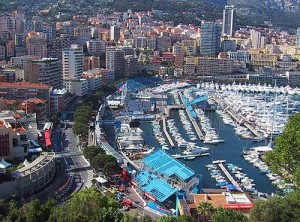 Rainier III, who ruled until 2005, succeeded to the throne following the death of his grandfather, Prince Louis II, in 1949. On 19 April 1956, Prince Rainier married the American actress Grace Kelly; the event was widely televised and covered in the popular press, focusing the world’s attention on the tiny principality.
Rainier III, who ruled until 2005, succeeded to the throne following the death of his grandfather, Prince Louis II, in 1949. On 19 April 1956, Prince Rainier married the American actress Grace Kelly; the event was widely televised and covered in the popular press, focusing the world’s attention on the tiny principality.
A 1962 amendment to the constitution abolished capital punishment, provided for women’s suffrage, and established a Supreme Court of Monaco to guarantee fundamental liberties. In 1993, the Principality of Monaco became a member of the United Nations, with full voting rights. In 2002, a new treaty between France and Monaco specified that, should there be no heirs to carry on the Grimaldi dynasty, the principality would still remain an independent nation rather than revert to France. Monaco’s military defence, however, is still the responsibility of France.
On 31 March 2005, Prince Rainier III, too ill to exercise his duties, relinquished them to his only son and heir, Prince Albert II. Prince Rainier died on 6 April 2005 after a reign of 56 years. His son Prince Albert II succeeded him and was thereafter titled Albert II, Sovereign Prince of Monaco.
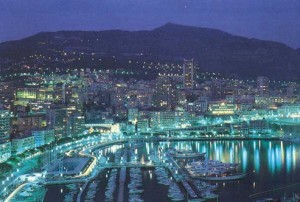 Following a period of official mourning, Prince Albert II formally assumed the princely crown on 12 July 2005, in a celebration that began with a solemn Mass at Saint Nicholas Cathedral, where his father had been buried three months earlier. His accession to the Monegasque throne was a two-step event, with a further ceremony, drawing heads of state for an elaborate Levée, held on 18 November 2005, at the historic Prince’s Palace in Monaco-Ville.
Following a period of official mourning, Prince Albert II formally assumed the princely crown on 12 July 2005, in a celebration that began with a solemn Mass at Saint Nicholas Cathedral, where his father had been buried three months earlier. His accession to the Monegasque throne was a two-step event, with a further ceremony, drawing heads of state for an elaborate Levée, held on 18 November 2005, at the historic Prince’s Palace in Monaco-Ville.
Governance – Politics of Monaco
Monaco has been governed under a constitutional monarchy since 1911, with the Sovereign Prince of Monaco as head of state. The executive branch consists of a Minister of State as the head of government, who presides over a five-member Council of Government. Until 2002, the Minister of State was a French citizen appointed by the prince from among candidates proposed by the French government; since a constitutional amendment in 2002, the Minister of State can be French or Monegasque. However, Prince Albert II appointed, on 3 March 2010, the Frenchman Michel Roger as Minister of State.
Under the 1962 constitution, the prince shares his veto power with the unicameral National Council. The 24 member National Council are elected for five-year terms; 16 are chosen through a majority electoral system and 8 by proportional representation. All legislation requires the approval of the National Council, which is currently dominated by the central-right Union of Monaco (UPM), who hold twenty-one seats. The only other party represented in the National Council is the right-wing Rally and Issues for Monaco (REM), which holds just three seats. The principality’s city affairs are directed by the Communal Council, which consists of fourteen elected members and is presided over by a mayor. Unlike the National Council, councillors are elected for four-year terms, and are strictly non-partisan, however, oppositions inside the council frequently form.






